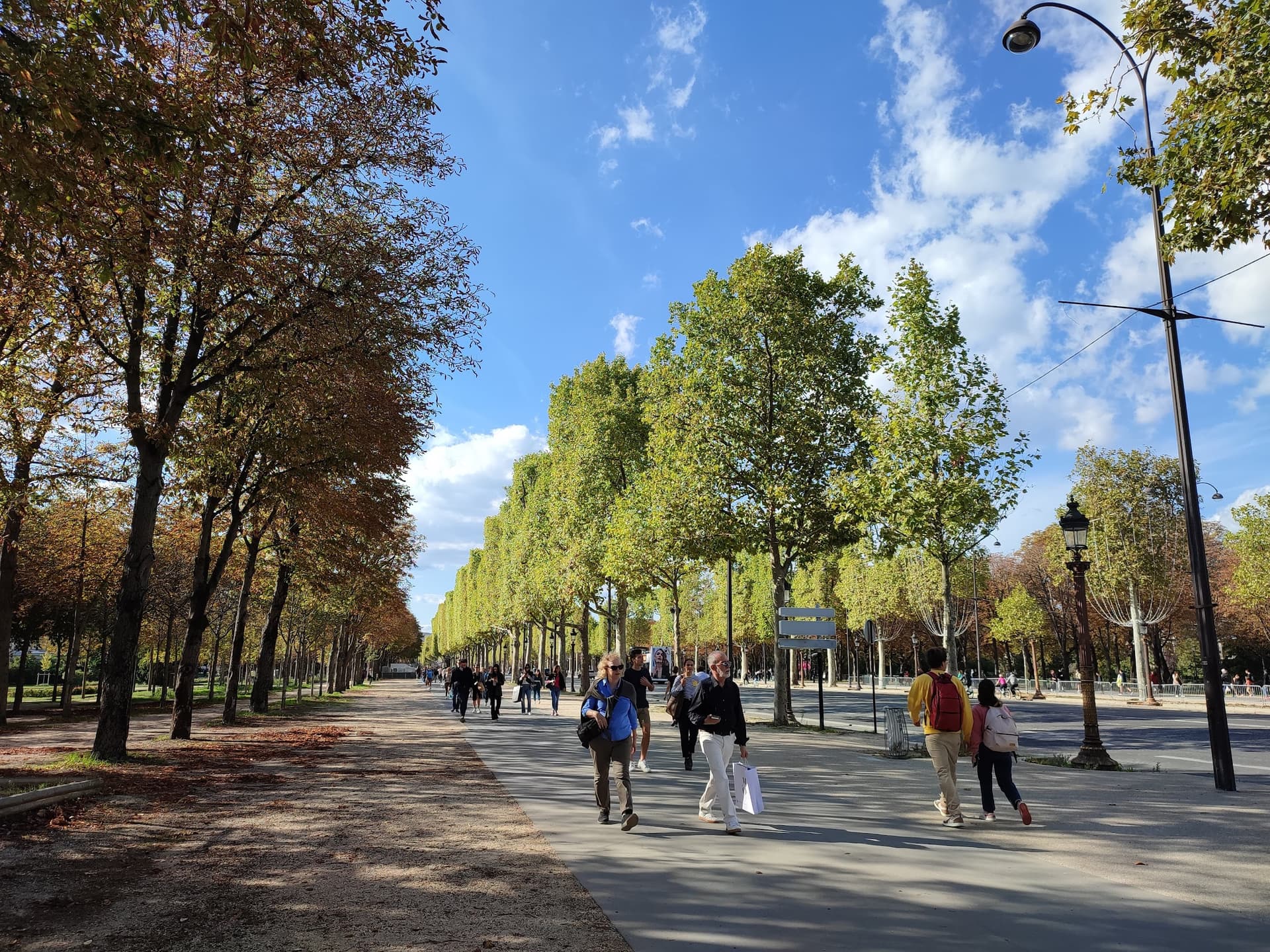Audio GuideJardin des Champs-Élysées
Jardins des Champs-Élysées
Iconic formal gardens landscaped by André Le Notre in 1667, with theaters, palaces & statues.
Welcome to the captivating story of Jardins des Champs-Élysées, a historic public park nestled in the eighth arrondissement of Paris. Originally created in sixteen hundred and sixty-seven by renowned landscape designer André Le Nôtre as an extension of the Tuileries gardens, the park was built with symmetrical flowerbeds and tree-lined avenues that defined the classic French formal garden style.
Over time, the park evolved. In the eighteenth century, it was lovingly restored by Abel François Poisson, and in eighteen hundred and forty, Jacques Ignace Hittorff redesigned the space by adding ornamental fountains, cafés, restaurants, and a theater. With each transformation, the park adapted to changing tastes. Later, it shifted towards a picturesque English garden style. Winding paths emerged, and groves with chestnut trees replaced the original elm trees.
Jardins des Champs-Élysées played an important role during major events, such as the Paris International Exposition in eighteen hundred and fifty-five and the Universal Exposition in nineteen hundred, when landmark cultural structures like the Grand Palais and Petit Palais were built.
Today, visitors can explore not only natural beauty but also cultural treasures. The park embraces theaters, fine dining, and monuments dedicated to figures like poet Alfred de Musset, explorer Jacques Cartier, and noted designer Pierre Cardin. Literature, especially the novels of Marcel Proust, has woven the garden into the fabric of French cultural identity, marking it as a place where art, history, and nature live in perfect harmony.






